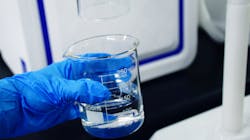Study finds new method for water facility disinfection
A team of researchers from Russia’s NUST MISIS and Sweden’s KTH Royal Institute of Technology have developed a new approach to surface disinfection of water supply facilities such as water wells, filters, pipes and reservoirs.
The team’s study found that ozone treatment is more effective for the inactivation of viruses and microorganisms than commonly used hypochlorite treatments. The study claims that ozone treatment is more effective from corrosion, economic and environmental perspectives. The study was published in Environmental Science and Pollution Research.
At least once a year, drinking water facilities are decontaminated by surface disinfection treatments to inactivate pathogens and microorganisms. The disinfection is commonly carried out using chlorine-containing substances, such as sodium and calcium hypochlorite.
The Russian-Swedish research team found that both sodium and hypochlorite treatments may result in accelerated material degradation, leading to increased corrosion even after the treatment period if disinfectants are trapped in micropores or cracks. Degradation of the inner surface of pipes can, in turn, result in the increase in iron released into tap water, making it unsafe to use for drinking or cooking.
"Ozone is increasingly being used for water decontamination. However, it is rarely used for surface disinfection despite its numerous technological, economic and environmental benefits," noted Valentin Romanovski, Senior Researcher at Research Center for Structural Ceramic Nanomaterials, NUST MISIS.
Scientists from NUST MISIS and KTH Royal Institute of Technology have found that the use of ozone solutions instead of chlorine-based disinfectants significantly lowers the risk of corrosion, resulting in significant reduction in the amount of iron released into tap water. Ozone treatment was proven to have the lowest negative impact on the environment and human health.
Another important aspect to consider is the processing time, which in practice means a stop of the drinking water production. If it takes long time and requires handling of chemicals, flushing, and waste effluents, the surface disinfection treatment will be delayed more commonly and is less preferred. Ozone solutions require the shortest time of treatment (30 min) as compared with 6-24 hours for chlorine-based treatments.
